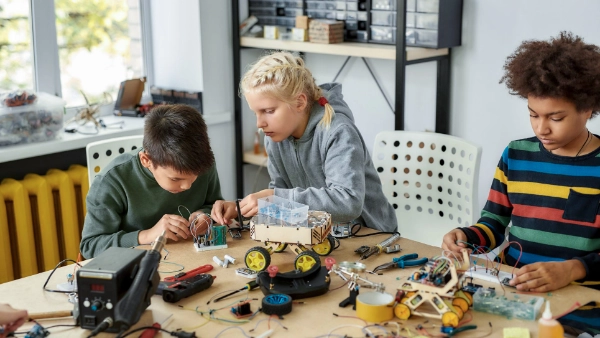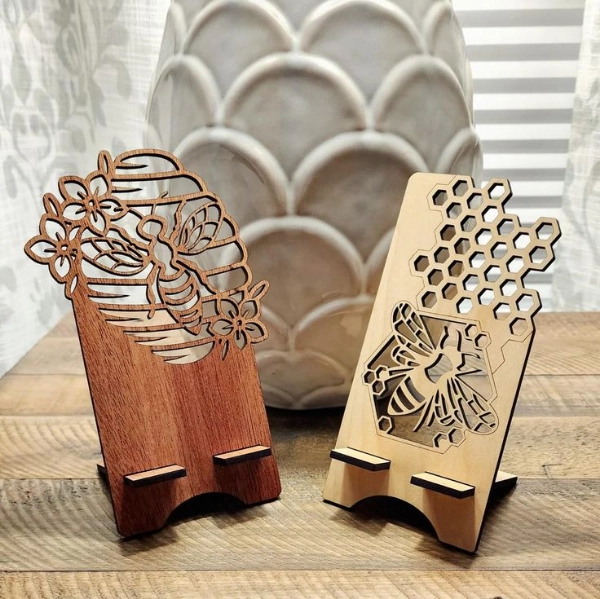How does Laser Cutter for Schools Diversify Education?
Schools are continually exploring ways to integrate new tools that enhance student learning and prepare them for future careers. One such innovation making waves in classrooms, maker spaces, and tech labs is the laser cutter. In this blog post, Good-Laser, a high quality laser cutter for education provider, will share how laser cutter for schools can improve the way STEM (Science, Technology, Engineering, and Math) subjects are taught, allowing students to engage in hands-on projects, hone their creativity, and explore new areas of technology and design.
What is Laser Cutter for Schools?
A laser cutter is a computer-controlled machine that uses a focused laser beam to cut, engrave, or etch a wide range of materials such as wood, acrylic, cardboard. The precision and versatility of laser cutting technology make it an excellent tool for creating detailed and intricate designs that are difficult to achieve with traditional methods.

Why Schools Should Invest in Laser Cutter for Schools?
1. Hands-On Learning Opportunities
Traditional learning methods often emphasize theoretical knowledge, but real-world applications can sometimes be lacking. A laser cutter allows students to bring their ideas to life in a tangible way. Whether it' s designing a custom logo, building a model, or creating art, students can engage in hands-on projects that deepen their understanding of concepts and encourage creativity.
For example, in an engineering class, students can use the laser cutter to cut precise components for mechanical projects. In an art class, students can engrave their own designs into wood or acrylic. In a history lesson, they might create detailed replicas of historical artifacts or maps, providing an interactive approach to learning that goes beyond textbooks and lectures.
2. Fostering Creativity and Innovation
A laser cutter is not just a tool for technical education but also a powerful tool for creative expression. Students can experiment with different materials, designs, and concepts, giving them the freedom to explore their artistic side while learning technical skills. By encouraging students to think critically and creatively, schools can help nurture the next generation of innovators and problem-solvers.
For instance, a laser cutter allows students to design their own personalized projects, such as custom jewelry, 3D models, or even functional items like phone stands or keychains. This type of creative exploration can inspire students to pursue careers in engineering, design, architecture, and other STEM-related fields.
3. Boosting STEM Education
One of the primary benefits of a laser cutter for schools is its role in supporting STEM education. The machine combines technology, engineering, mathematics, and design, making it an ideal tool for teaching the principles of these subjects in a practical, hands-on way.
Students can learn about CAD (Computer-Aided Design) software, which is commonly used in industries like engineering and product design. They can then translate their digital designs into physical objects using the laser cutter. This combination of design and manufacturing reinforces the interconnectedness of STEM disciplines and prepares students for careers in industries that require expertise in all these areas.

4. Sustainable Learning Solutions
A laser cutter can also contribute to sustainability efforts in schools. Many laser cutters are capable of using recycled materials such as cardboard, acrylic scraps, and wood offcuts. Students can learn about sustainability by using these materials in their projects, gaining an understanding of how recycling and reusing materials can be incorporated into design and manufacturing processes.
Additionally, by reducing waste compared to traditional cutting methods, such as saws or knives, laser cutting offers a cleaner and more efficient solution for creating precise cuts with minimal material wastage. This aligns with eco-conscious teaching goals and introduces students to environmentally responsible practices.
5. Encouraging Collaboration
Laser cutting projects are ideal for group work, making them an excellent tool for fostering collaboration and teamwork in the classroom. Students can work together on a design, dividing tasks to complete the project efficiently. For example, one group member might design the artwork, while another might work on the CAD modeling, and another could manage the setup and operation of the laser cutter.
This teamwork not only enhances their technical skills but also promotes soft skills such as communication, time management, and problem-solving, which are vital for success in the workplace.
6. Career Pathways and Skills Development
Exposure to laser cutting technology equips students with valuable skills that are highly sought after in various industries. By learning to operate and troubleshoot a laser cutter, students gain experience with high-tech machinery and design software that are used in industries ranging from manufacturing and architecture to fashion and art.
Students can leave school with a competitive edge, having already acquired practical experience that may otherwise take years to gain. Whether they choose to pursue careers in product design, engineering, or entrepreneurship, the experience of using a laser cutter provides a solid foundation for their future endeavors.
How to Integrate Laser Cutter into School Curriculums?
Integrating a laser cutter into the school curriculum can be done in several ways. Teachers can incorporate laser cutting into STEM-focused classes, such as design and technology, robotics, or physics. They can also use the tool in cross-disciplinary projects that link subjects like art, history, and math.
Schools can organize workshops or after-school clubs where students can explore laser cutting in a more informal setting, encouraging self-directed learning and exploration. Additionally, teachers can partner with local businesses or universities to provide students with real-world applications of laser cutting technology.
Conclusion
A laser cutter for schools is an innovative and versatile tool that opens up countless possibilities for learning, creativity, and hands-on engagement. From fostering STEM skills to encouraging artistic expression and sustainability, the educational benefits of laser cutting technology are immense. By investing in a laser cutter, schools provide students with the opportunity to develop practical skills that are essential for success in the 21st century.
Whether used for technical projects, creative endeavors, or collaborative group work, the laser cutter is a valuable asset in any school' s educational toolkit. By introducing students to cutting-edge technology early on, we can inspire the next generation of innovators, creators, and thinkers who will shape the future.




